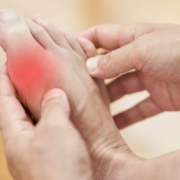Exercise for Arthritis: Empowering Your Joints and Enhancing Your Life

Living with arthritis doesn’t mean giving up on an active lifestyle. In fact, regular exercise can be a game-changer when it comes to managing arthritis symptoms and improving overall well-being. Let’s explore the transformative benefits of exercise and discover arthritis-friendly activities that can empower you to live a fulfilling and pain-free life.
Does exercise reduce Arthritis pain?
Yes! Exercise plays a crucial role in managing arthritis by strengthening muscles, increasing joint flexibility, and reducing pain and stiffness. It also improves overall cardiovascular health and boosts mood and mental well-being. However, choosing exercises that are gentle on the joints and cater to your specific needs is essential.
How does exercise help with Arthritis?
Exercise not only alleviates pain but also:
- Enhances muscle strength to support and strengthen joints
- Alleviates joint stiffness
- Improves balance
- Increases energy levels and reduces fatigue
- Aids weight management
- Enhances mood

4 Types of exercise to try for Arthritis pain:
- Low-Impact Aerobics: Activities like walking, cycling, or swimming are ideal for individuals with arthritis. These exercises are easy on the joints while providing excellent cardiovascular benefits. Start slowly and gradually increase the intensity and duration as your fitness improves.
- Strength Training: Strengthening the muscles around your affected joints can provide added support and reduce stress. Engage in resistance exercises using resistance bands, light weights, or bodyweight exercises like squats and lunges. Work with a professional to ensure proper form and safety.
- Tai Chi and Yoga: These ancient practices focus on gentle movements, stretching, and deep breathing. They improve balance, and flexibility, and reduce stress. Look for arthritis-specific classes or modifications to ensure the exercises suit your needs.
- Water-Based Activities: Swimming or water aerobics are excellent options for individuals with arthritis. The buoyancy of water reduces the pressure on joints while providing resistance for muscle strengthening. It’s a great way to stay active and enjoy the therapeutic benefits of water.
Remember that exercise injuries are easily avoided by warming up and cooling down properly, using safe equipment, wearing the right clothing and footwear, and using the right techniques. If you experience pain or discomfort, adjust the intensity, or consult with a healthcare professional.

Can my diet affect my Arthritis?
Given the various types of arthritis and individual differences, what may be effective for one person may not be for another.
Regarding your diet, there are two key elements significantly impact arthritis:
- Weight management: Maintaining a healthy weight is crucial as excess weight strains the joints, potentially leading to increased risks of conditions like rheumatoid arthritis or gout.
- Balanced diet: Consuming a well-rounded diet rich in essential vitamins and minerals is important for everyone. However, individuals with arthritis may benefit from reduced medication side effects and protection against heart and blood-related complications associated with certain forms of arthritis.
By incorporating regular exercise into your routine and adopting a holistic approach to arthritis management, you can empower your joints, enhance your overall well-being, and unlock a world of possibilities.
Always consult with your healthcare provider before starting a new exercise program and enjoy the journey to a healthier, more active you.





